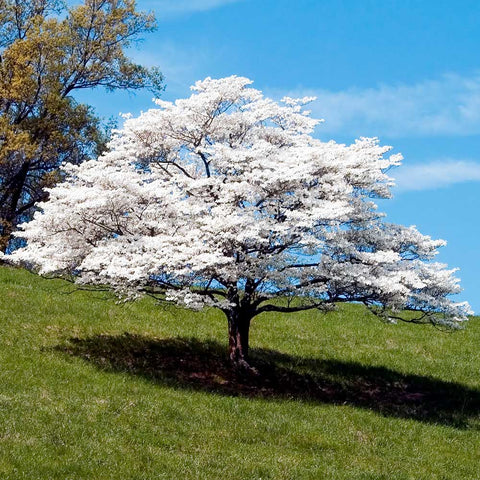What is Jacob's Ladder?
Jacob's ladder (Polemonium caeruleum) is a flowering plant native to Europe and Asia but has been naturalized in North America. It belongs to the family Polemoniaceae and is a perennial herbaceous plant that typically grows to a height of 60-100 cm.
Jacob's ladder plant leaves are pinnate and have several leaflets arranged in a ladder-like formation. The flowers are usually blue or purple and arranged in loose clusters at the top of the stems.
Jacob's ladder prefers moist soil that is well-drained. It can be grown from seeds or propagated by division in the spring or fall. The plant is commonly used in gardens as an ornamental plant or as a ground cover and is attractive to pollinators such as bees and butterflies.
How to plant Jacob's Ladder plants?
- Choose a suitable location: Jacob's ladder likes partial to full shade and moist, well-drained soil. Choose a spot in your garden that meets these requirements.
- Prepare the soil: Loosen it to a depth of about 12 inches and mix well a ric soil compound to improve drainage and fertility.
- Water the plant very well before after planting and keep the ground moist but not soggy. During dry periods, you may need to water the plant more frequently.
- Mulch around the plant: Mulching can help to retain soil moisture and suppress weeds. Apply a layer of mulch of your choice around the plant, such as shredded bark or compost.
- Care for the plant: Jacob's ladder requires minimal maintenance. Fertilize the pernnial in the spring with a balanced fertilizer and deadhead the flowers to encourage more blooms. Divide the plant every few years to prevent overcrowding.
Following these steps, you can plant and grow Jacob's ladder in your garden.
How to care for Jacob's Ladder plants?
- Watering: Jacob's ladder likes moist soil but should be clean. Water the plant deeply once a week or more often during hot, dry weather. Avoid overhead watering, as this can promote the development of fungal diseases.
- Fertilizing: Follow the manufacturer's instructions to apply a balanced fertilizer in the spring. Do not over-fertilizing, as this can lead to excessive foliage growth wich may stunt the flowers.
- Pruning: Remove wilted flowers as soon as they wilt to encourage the plant to produce more blooms.
- Pruning: Jacob's ladder does not require much pruning, but you can cut back the stems after flowering to tidy up the plant and promote bushier growth.
- Division: Every few years, divide the plant in the spring or fall to prevent overcrowding and rejuvenate the plant. Dig the roots and gently separate the clumps into smaller sections, each with its roots and shoots.
Following these care tips can keep your Jacob's ladder plants healthy and thriving for years.




